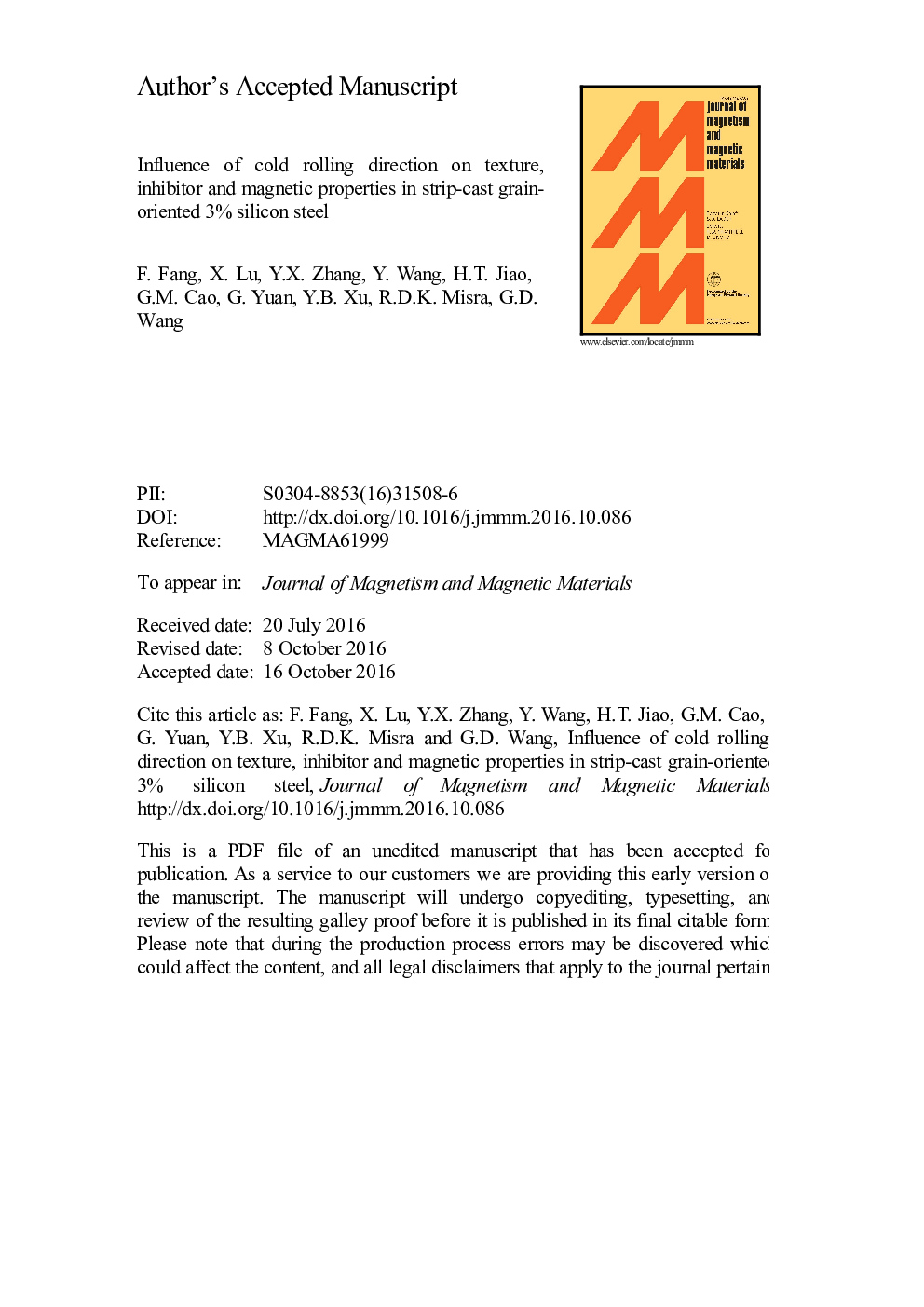| Article ID | Journal | Published Year | Pages | File Type |
|---|---|---|---|---|
| 5491257 | Journal of Magnetism and Magnetic Materials | 2017 | 28 Pages |
Abstract
An unconventional cold rolling scheme (inclined rolling at 0°, 30°, 45°, 90° during second-stage cold rolling process) was adopted to process grain-oriented silicon steel based on strip casting process. The influences of inclination angles on microstructure, texture, inhibitor and magnetic properties were studied by a combination of EBSD, XRD and TEM. It was found that the α-fiber texture was weakened and γ-fiber was strengthened in cold rolled sheet with increase in inclination angle. The primary recrystallization sheet exhibited more homogeneous microstructure with relatively strong γ-fiber, medium α-fiber texture, weak λ-fiber texture and Goss component at high inclination angles. Fine and homogeneous inhibitors were obtained after primary annealing with increase in inclination angle from 0° to 90° because of more uniform deformation after inclined rolling. The grain-oriented silicon steel experienced completely secondary recrystallization at various inclination angles after final annealing process, with superior magnetic properties at 0° and 90°. Furthermore, Goss nuclei capable of final secondary recrystallization in strip casting process newly formed both in-grain shear bands and grain boundaries region during second-stage cold rolling and subsequent annealing process, which is different from the well-accepted results that Goss texture originated from the subsurface layer of the hot rolled sheet or during intermediate annealing process. In addition, the Goss texture that nucleated in-grain shear bands was weaker but more accurate as compared to that in grain boundaries region.
Related Topics
Physical Sciences and Engineering
Physics and Astronomy
Condensed Matter Physics
Authors
F. Fang, X. Lu, Y.X. Zhang, Y. Wang, H.T. Jiao, G.M. Cao, G. Yuan, Y.B. Xu, R.D.K. Misra, G.D. Wang,
